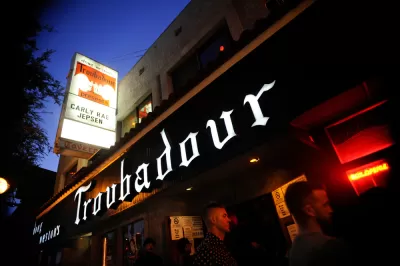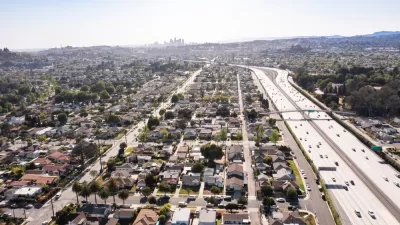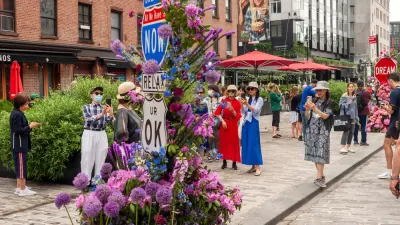Where have all the venues gone?

The example of the Troubadour, an independently owned music venue in West Hollywood that birthed acts like Joni Mitchell, Linda Ronstadt, Tom Waits, the Eagles, Jackson Browne, James Taylor, and Elton John into the mainstream, shows how difficult the pandemic has been for the live music industry.
Randall Roberts reports on the challenges facing the owners of the Troubadour, which has been located on Santa Monica Boulevard on the edge of West Hollywood's border with Beverly Hills for 60 years. Christine Karayan, the club’s general manager tells Roberts that the club recently launched a GoFundMe to help the club bridge the gap to a potential reopening in stage four of the state of California's reopening plan.
“That means the middle to the end of next year to potentially open, and maybe a 25% cap” on crowd size, Karayan says. “I can’t foresee being able to ride this out like that.”
Music venues like the Troubadour are some of the most appealing amenities of urban living. Questions about whether cities will lose residents during and after the pandemic must take into account the survival of cultural institutions like these, while also considering that cultural institutions were already under threat in many large cities due to rising commercial rents and a growing population of residential neighbors less inclined to see the value of a place to hear music played loud.
For an example of local government relief for music venues, look to Toronto, where the city is considering a reduction of commercial property taxes for music venues.
FULL STORY: Historic Troubadour nightclub launches GoFundMe page, calls survival ‘a big if’

Study: Maui’s Plan to Convert Vacation Rentals to Long-Term Housing Could Cause Nearly $1 Billion Economic Loss
The plan would reduce visitor accommodation by 25,% resulting in 1,900 jobs lost.

North Texas Transit Leaders Tout Benefits of TOD for Growing Region
At a summit focused on transit-oriented development, policymakers discussed how North Texas’ expanded light rail system can serve as a tool for economic growth.

Why Should We Subsidize Public Transportation?
Many public transit agencies face financial stress due to rising costs, declining fare revenue, and declining subsidies. Transit advocates must provide a strong business case for increasing public transit funding.

How to Make US Trains Faster
Changes to boarding platforms and a switch to electric trains could improve U.S. passenger rail service without the added cost of high-speed rail.

Columbia’s Revitalized ‘Loop’ Is a Hub for Local Entrepreneurs
A focus on small businesses is helping a commercial corridor in Columbia, Missouri thrive.

Invasive Insect Threatens Minnesota’s Ash Forests
The Emerald Ash Borer is a rapidly spreading invasive pest threatening Minnesota’s ash trees, and homeowners are encouraged to plant diverse replacement species, avoid moving ash firewood, and monitor for signs of infestation.
Urban Design for Planners 1: Software Tools
This six-course series explores essential urban design concepts using open source software and equips planners with the tools they need to participate fully in the urban design process.
Planning for Universal Design
Learn the tools for implementing Universal Design in planning regulations.
City of Santa Clarita
Ascent Environmental
Institute for Housing and Urban Development Studies (IHS)
City of Grandview
Harvard GSD Executive Education
Toledo-Lucas County Plan Commissions
Salt Lake City
NYU Wagner Graduate School of Public Service





























